Vintage Aircraft Interiors: 50 Years of Innovation
April 04, 2018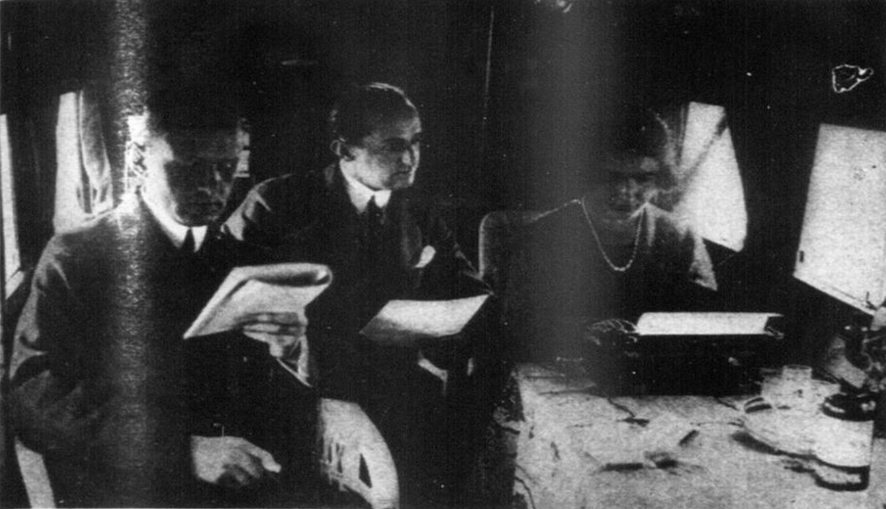
Air Travel de luxe in 1923
Interior of a Fokker Transport used on European airways in 1923.
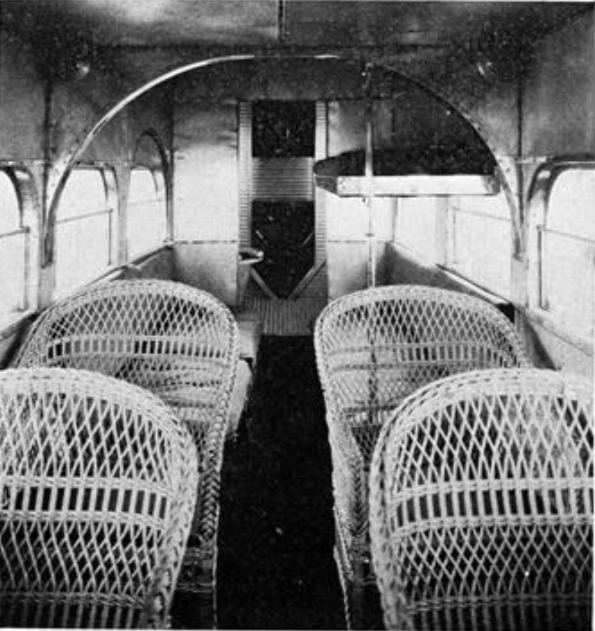
4 AT Wicker Chairs in 1927
The 4 AT built for the Standard Oil Co. had a cabin equipped with three berths which could be converted into beds at night. The walls of all the cabins were padded with kapok for noise reduction. Large observation windows (which could be opened or closed for ventilation) were located in the cabin walls. Behind the cabin were an equipped washroom, toilet and a space for baggage. The cabins were provided with an exhaust heater.
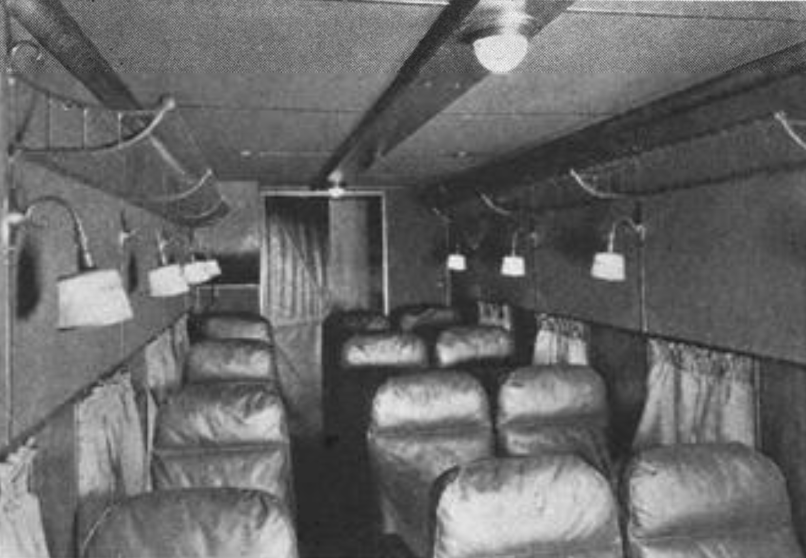
Boeing 80 in 1928
A rear view of the Boeing 80 cabin showing the 12 seats, lights and parcel racks.
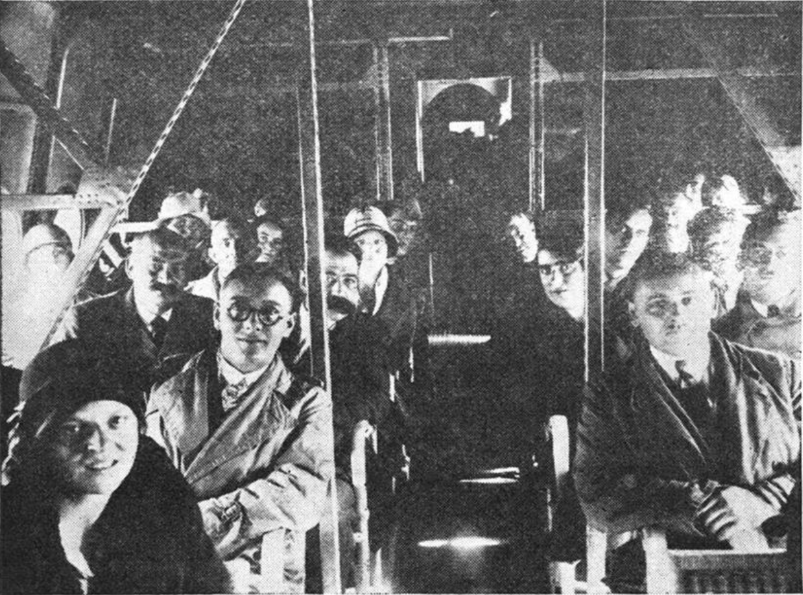
The Dornier Do.X in 1929
Pictured here is the interior of the flying boat as 169 passengers were aloft.
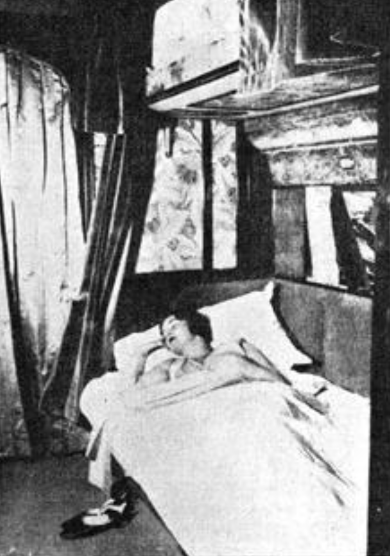
Fokker F-32 in 1930
Here is the corner of the day-and-night compartment on a Fokker F-32 owned by Lawrence F. Fisher, a director of the Fokker company in 1930.
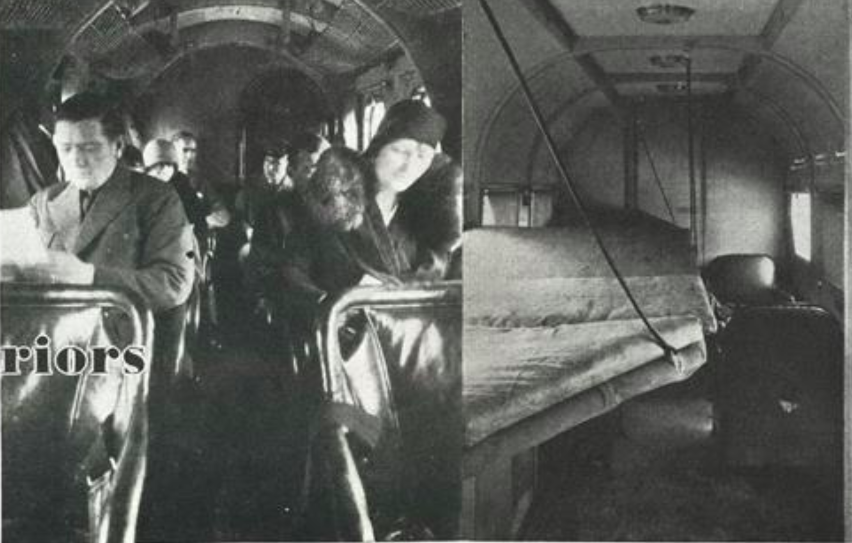
"Modern” transport interior from 1932
Form-fitting seats were employed in the Junkers airplanes of the Swedish Air Transport Company.
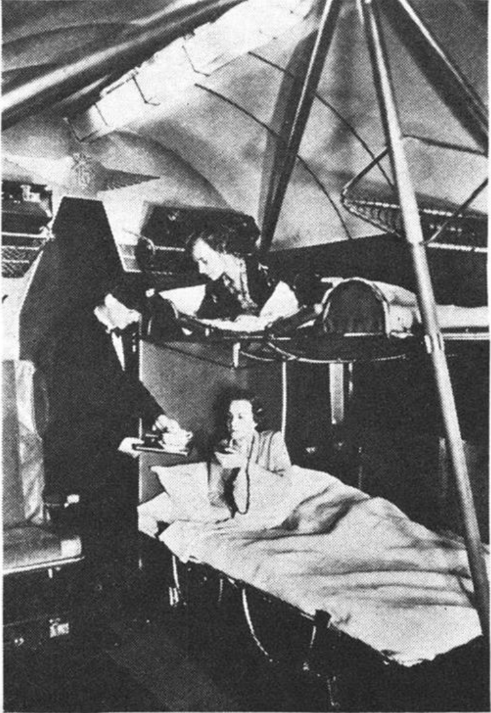
Fokker XXXVI Sleeping Quarters in 1934
When the Curtiss-Wright and American Airways designers were working out the details of the Condor sleeper plane they evolved an arrangement of berths very much in the Pullman tradition. The berths of the Fokker XXXVI resemble those in European Wagon-Lits. The Fokker berths were segregated into compartments of four.
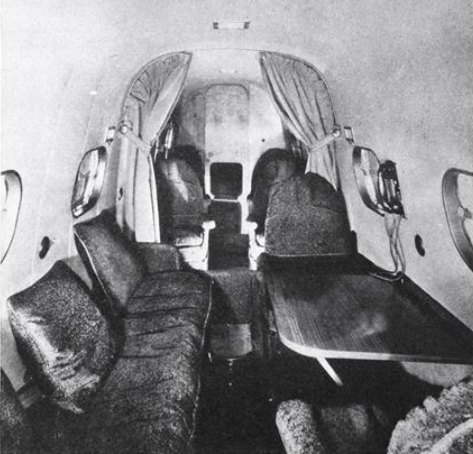
Executive Transport in 1935
Comfort and convenience for the flying executive in the interior of Woolaroc III.
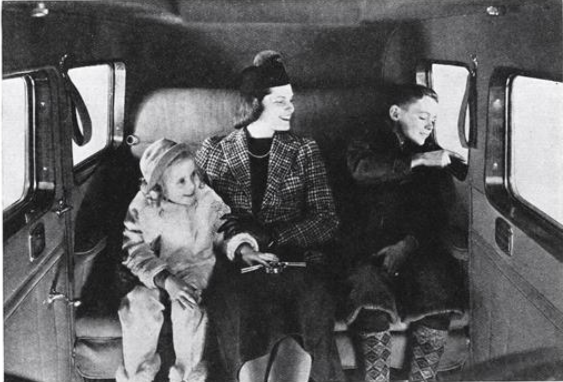
Interiors for Comfort in 1939
Private aircraft in 1939 were designed for better vision and had fewer things for passengers to fall over getting in and out. The photo caption in the original article reads, "There’s plenty of room for the family in the rear seat of the Stinson SR 10C."
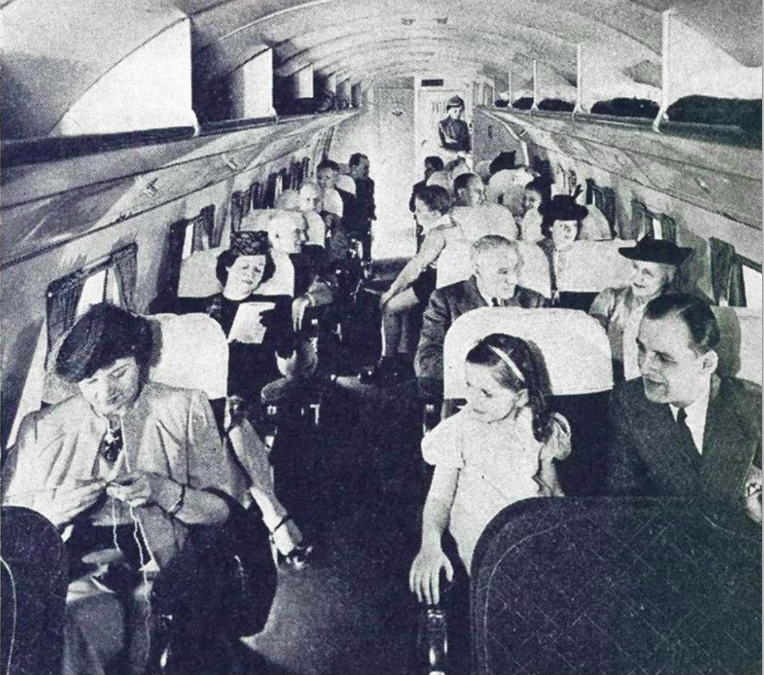
Mainlander interior progress in 1940
Here is the interior of a Mainlander in 1940. Passengers rode in upholstered chairs with individual reading lights and individual ventilators.
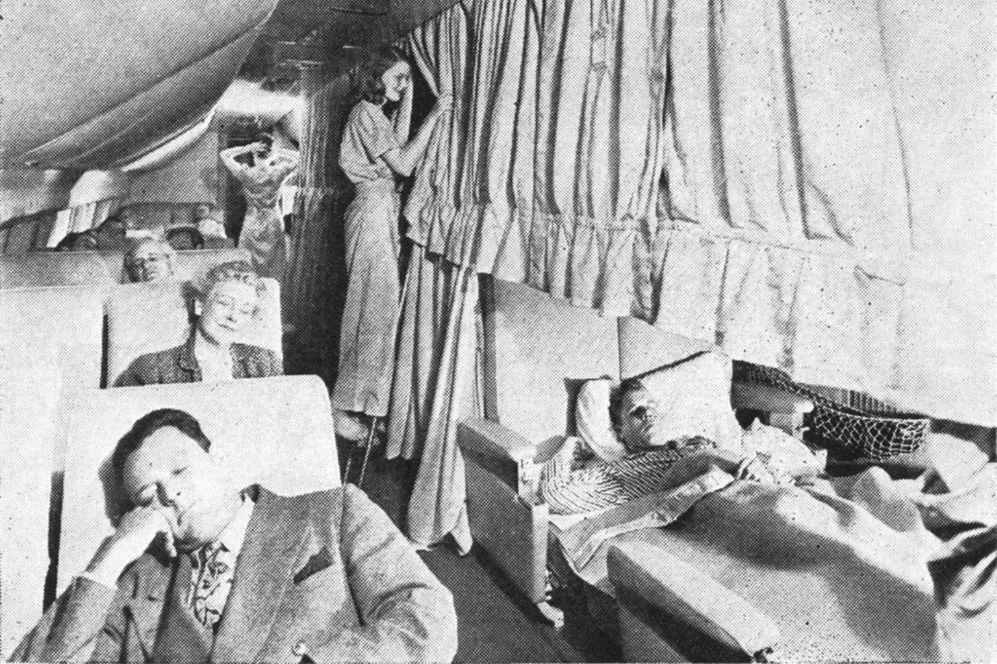
Air France Sleeper in 1947
Passengers on Air France's luxury schedules between New York and Paris in 1947 rode in late-model Constellations with berths for 22 people or daytimes seats for 44 travelers. All berths were 6 1/2 ft. long and as wide as three-quarter beds. Upper berths were made up before the plane's departure. The interior featured French motif in rose beige and chartreuse, scheme Air France found restful to passengers.
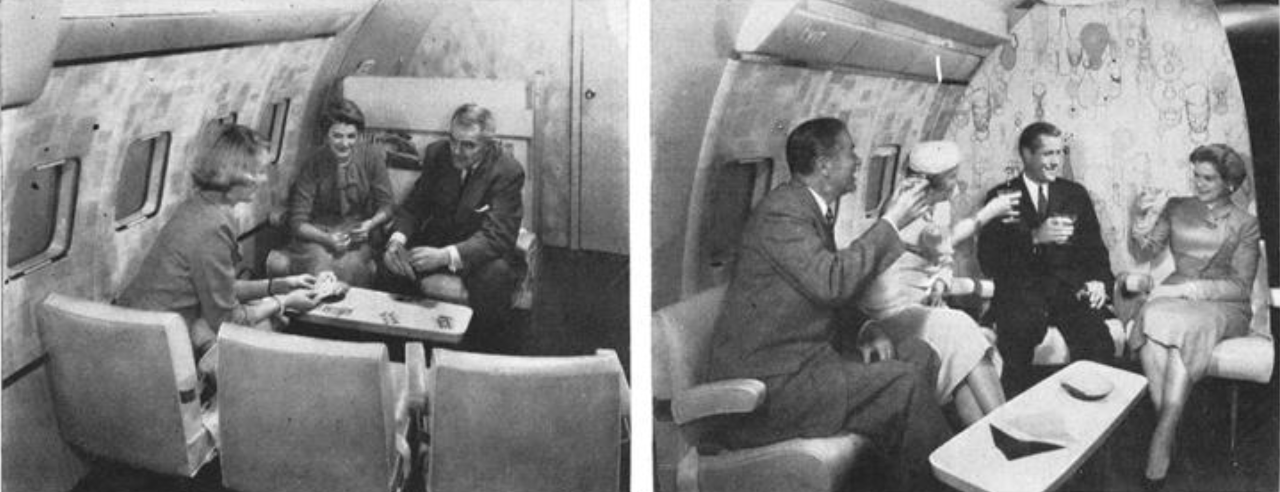
Boeing Shows Luxurious 707 interior in 1956
This cabin had two five-seat luxury lounges. Bulkheads separating from cabin could be removed for additional seats.
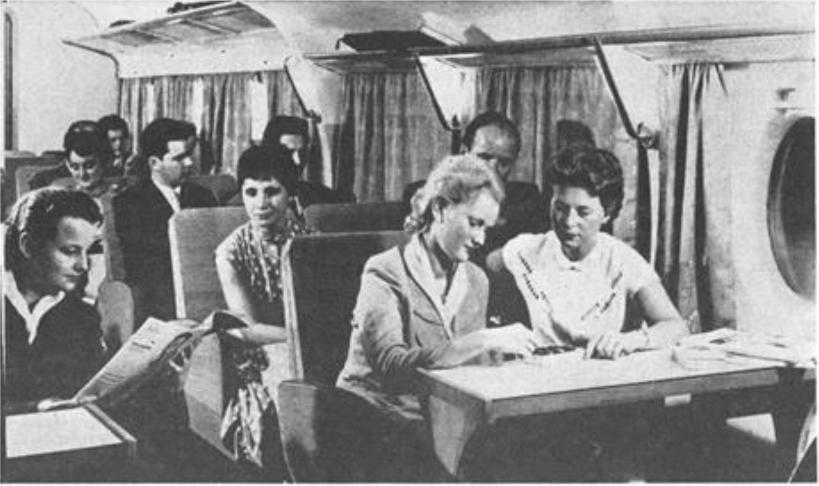
Mockup Shows Interior of East German BB-152 in 1958
Mockup of East Germany’s BB-152 jet transport in 1958 shows that the aircraft, designed by Prof. Brunolf Baade, would have Viscount-type windows that could be used as emergency exits. Interior would be decorated in shades of blue, from light to dark, with contrasting brown. Overhead racks did not combine services such as lights, call buttons.
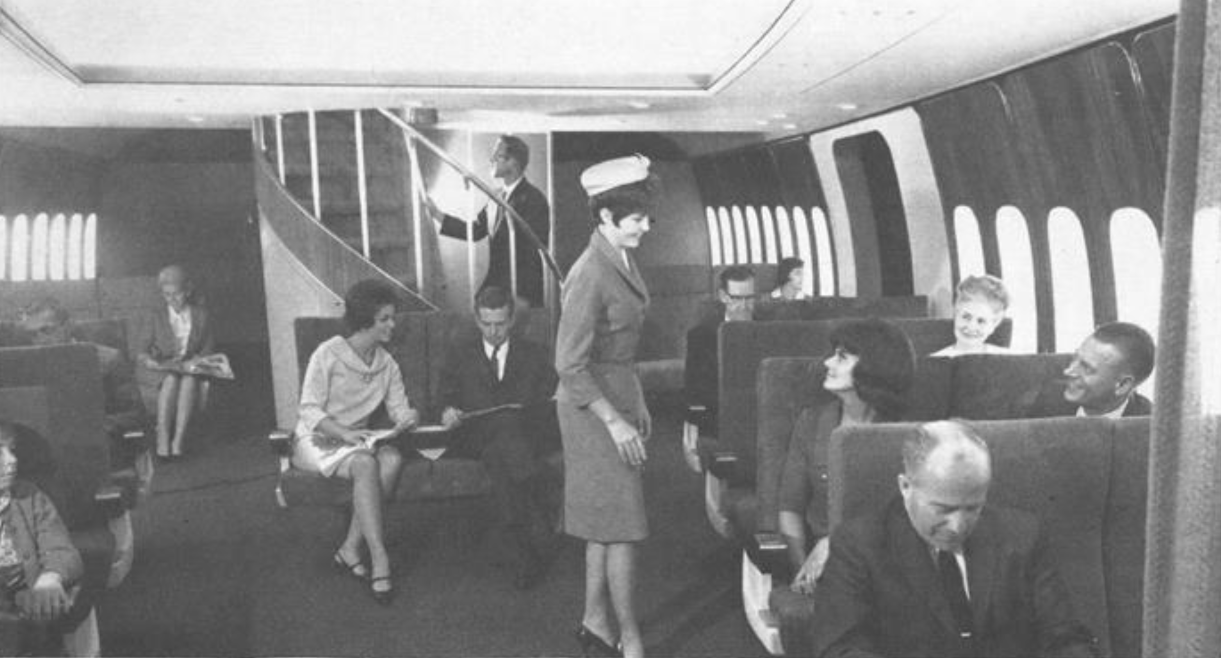
747 cabin layouts shown by Boeing in 1966
Possible interior arrangements for the Boeing 747 advanced-technology large jet transport are illustrated in this photo, which was taken inside the full-scale mockup of the aircraft in 1966.
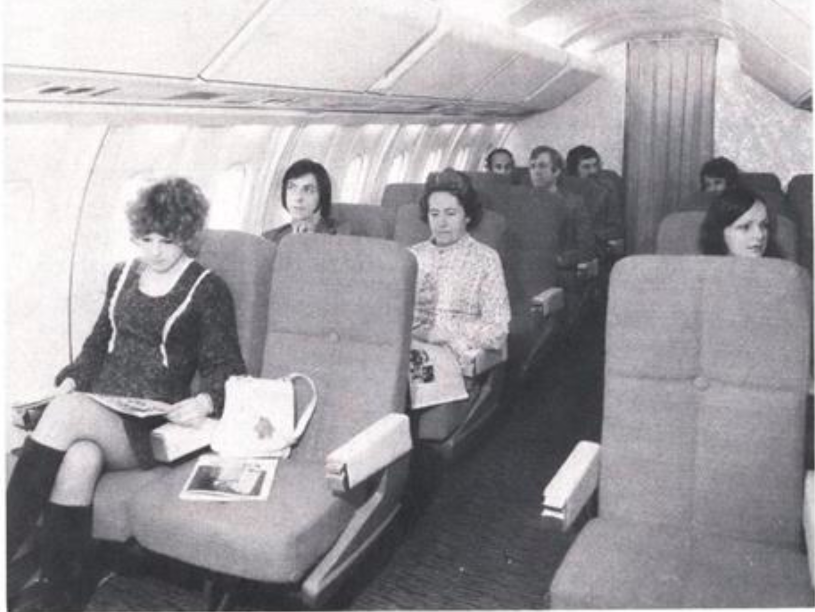
Concorde Sales Campaign Being Keyed More to Customer Needs in 1973
Redesign of Cocorde’s interior in 1973 was aimed at eliminating tube-like appearances to provide more comfort and greater passenger acceptance in 1973.
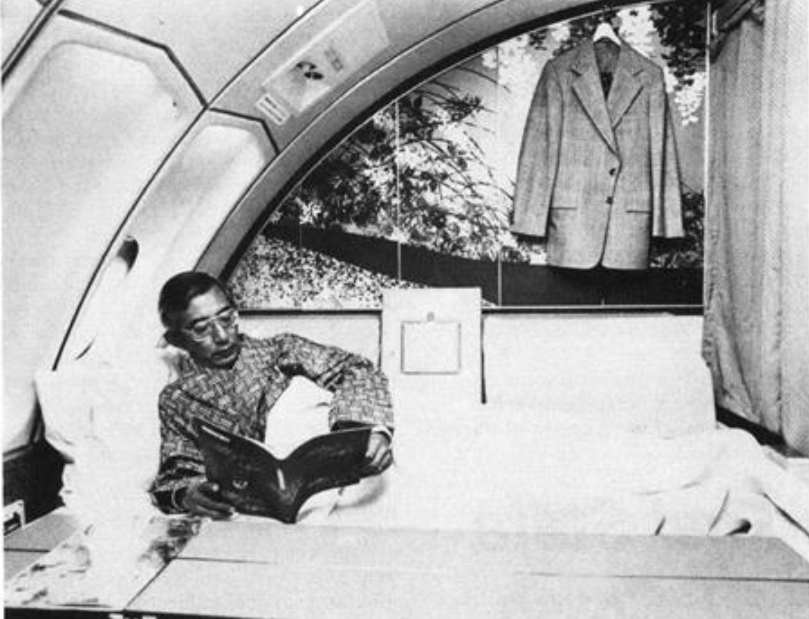
Japan Air Lines' Boeing 747 Berth in 1979
Pictured here is the upper deck berth installed by Japan Air Lines in its long-range Boeing 747s. Berths were 6 ft. long and 2 ft. 3 in. wide, with a curtain visible at the right. It could also be used as a lounge seat.
Aircraft interiors have changed a lot over the years. Take a look at different cabins from the 1920s to the 1970s including a Boeing 80, a Fokker F-32 and a Woolaroc III.